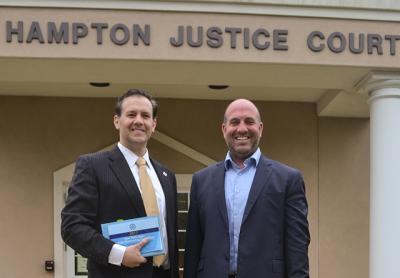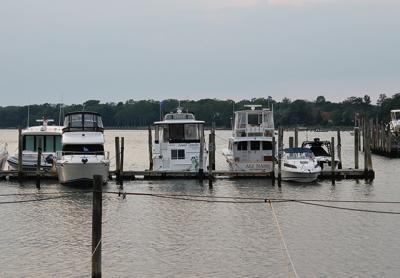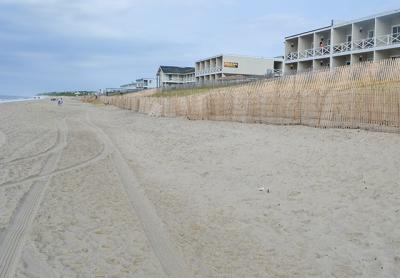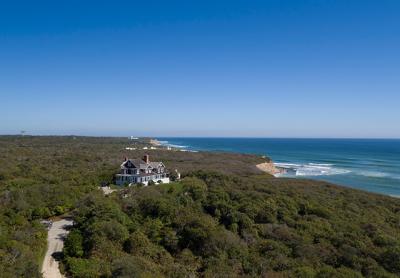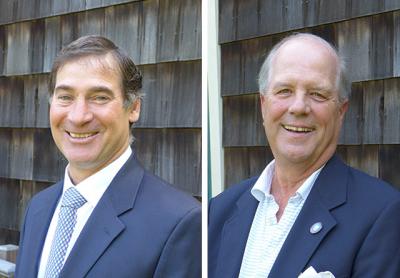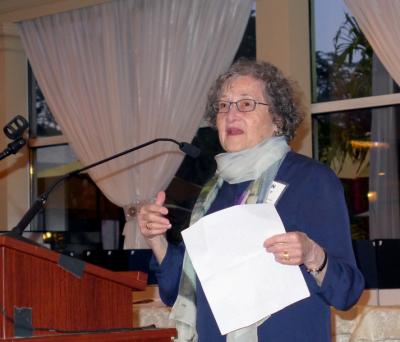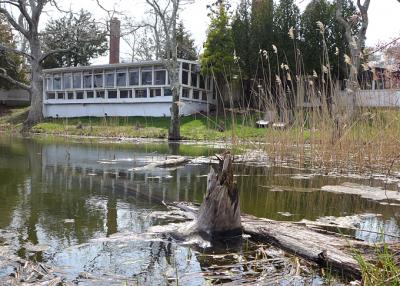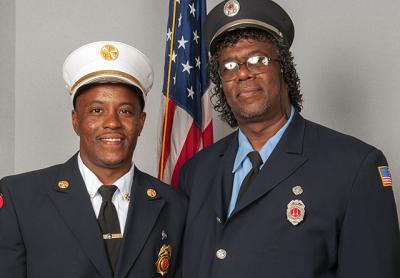A Plea to Open Pond
A Plea to Open Pond

Three days after closing Georgica Pond because a bloom of cyanobacteria, or blue-green algae, had been confirmed, a long-simmering disagreement among the East Hampton Town Trustees over the recognition of state and federal jurisdiction came to a boil at their meeting Monday, with angry accusations and occasional pounding on the table at which they sat. In the end, a majority agreed to request emergency permits to open the pond to the ocean.
Researchers from the State University at Stony Brook reported detecting cyanobacteria in Georgica, as well as at Maratooka Pond in Mattituck, last week. The bloom has shown up in Georgica for the past several summers, and the Suffolk Health Department has advised the public not to swim or wade in the water and to keep pets and children away until the levels drop and warnings are lifted.
Cyanobacteria can cause nausea, vomiting, diarrhea, skin and eye irritation, allergic reactions, and breathing problems. In the case of accidental contact, the county advises that people rinse themselves off with clean water immediately and seek medical attention if symptoms arise.
On Monday, Sara Davison, the executive director of the Friends of Georgica Pond Foundation, a group of property owners that is working to improve the pond’s health, repeated a request she had made at a meeting last month, that the trustees seek emergency permits from the Army Corps of Engineers, the State Department of Environmental Conservation, and the federal Fish and Wildlife Service to open the pond to the Atlantic. Such openings flush the pond, improve circulation, and increase salinity.
Because weather and pond conditions prevented the traditional spring opening, or letting, by the trustees, the pond was a foot higher than a year ago, Ms. Davison said. Its temperature was rising, salinity levels were low, and chlorophyll very high.
The trustees, however, are negotiating with the Army Corps for a 10-year permit to dredge certain sections within the pond and are concerned that opening it would jeopardize that effort.
“It’s a changed situation,” Ms. Davison said on Monday, “and of course Friends of Georgica Pond Foundation is very concerned . . . with such high water and toxic conditions.” She asked the trustees to “at least ask the D.E.C. if going parallel with an emergency opening request would or not jeopardize the larger permit.”
Complicating the matter are endangered and federally protected piping plovers, which are nesting on the beach between the pond and the ocean. Digging a six-foot-wide trough would result in a violent surge of water, the direction of which is difficult to predict and impossible to control, and pose a danger to the shorebirds. The presence of nesting plovers would require the Fish and Wildlife Service to sign off on an emergency permit.
The Southampton Town Trustees, Ms. Davison noted last month, had obtained emergency permits for Mecox Bay and Sagaponack Pond, where there also are nesting plovers. Both water bodies were subsequently opened to the ocean, although the shorebirds’ nests there are significantly farther from public property than the roughly 50 feet between the nests and the East Hampton trustees’ land.
“What about hand-digging the pond to minimize disturbance to the plovers?” Ms. Davison asked. She offered the foundation’s assistance in engaging people to monitor the nesting sites during a letting.
Before the meeting, the trustees had discussed going through land owned by the Georgica Association, a private enclave to the west that maintains a bathing house on the beach, to let the pond. “Perhaps that’s something that’s workable,” Jim Grimes told Ms. Davison. “It would be really nice if we could get this done, because now we truly have an emergency for the D.E.C. to react to.”
At this point, Diane McNally, the trustees’ former presiding officer, said, “You’ve got to recognize there’s no controlling that thing. Once you let it . . . there’s a chance you lose the plovers or the beach house.”
The discussion then veered into argument. Ms. McNally, who opposes any recognition of state or federal jurisdiction, criticized a memo from a Manhattan law firm the Friends of Georgica Pond Foundation had commissioned, which Ms. Davison said was “to understand the environmental laws that protect the ecology of the pond” and “how they would mesh or interact with the Endangered Species Act.” Ms. McNally argued that the trustees should “let Mother Nature take its course right now.”
“But do you understand there is an emergency?” Rick Drew, a trustee, asked, referring to the algal bloom. “What about all the homeowners that are nearby that have families, that have children, that have pets? We just let that go so that you can have your position of not recognizing anyone else, and you have your autonomy, and you ignore the needs of the community? That’s maddening, Diane. That is irresponsible.”
Ms. McNally disagreed. “We need to remember that we’re here to represent the public and the public lands that we manage on behalf of them, for perpetuity.”
“It’s polluted, the baymen can’t use it,” Mr. Drew responded. “We want to help the baymen to have a healthy pond. I’m a bayman, I work on the bay, I work on the waters, so please don’t insult me.”
“I’m not even going to bother to talk anymore, Rick,” was Ms. McNally’s exasperated reply. “Okay?”
“That would be great,” Mr. Drew said. “Now we can make some progress.”
“Thank you very much,” Ms. McNally exclaimed, slamming her fist on the table. “I’ve only sat here for 20 years for nothing.”
Over the objections of Ms. McNally and Tim Bock, who said he would not seek re-election this year, a majority of the trustees recognizes the state and federal agencies’ authority, and agrees that they should seek emergency permits from them.
Tyler Armstrong said, “This is going to be the year that we step up and do something immediately to get rid of this thing.”
The trustees must balance short and long-term goals, said Bill Taylor. “We’re moving with all deliberate speed, but our goal is the health of the pond in 10 years, more than what’s going to happen in the next 10 days or 10 weeks

